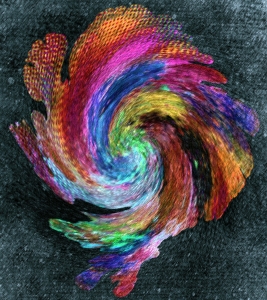A peek into the world of my upcoming novel: The Venice Biennale, Part 1
A peek into the world of my upcoming novel: The Venice Biennale, Part 1
A peek into the world of my upcoming novel: The Venice Biennale, Part 1
-
Hannah
-
Hannah
I’m delighted to announce that my next novel, The Echoes of Love, will be published in November. I can reveal that the love story is set predominantly in Venice, Italy, so to introduce this wonderful place I’d like to start by looking at the Venice Biennale.
The Biennale is a huge, multi-million-pound contemporary art event that is modelled on the World Fair. It is held every other year in Venice. It attracts more than 300,000 visitors and incorporates:
- The Venice Film Festival – the oldest film festival in the world
- The Venice Biennale of Architecture
- The International Festival of Contemporary Dance
The Biennale is based in the Giardini park. There, the themed exhibition curated by the Biennale’s director is displayed in a large exhibition hall known as the central pavilion. Other national pavilions are also located in the park, thirty in total. Countries that do not own a pavilion exhibit in other places in the city.
History of the Biennale
The Biennale began way back in 1895, at which point decorative arts were the focus. But over time the Biennale attracted more interest abroad, and by 1907 countries had installed pavilions at the exhibition. After the First World War, the Biennale was one of the few events worldwide providing a platform for modern art, and many modern artists exhibited their works at the Biennale.
The 1930s saw the introduction of new sections of the event – the Music Festival, the International Film Festival and the Theatre Festival – and the introduction of prizes awarded to artists. The event was cancelled during the Second World War, but it returned with vigour in 1948, pioneering coverage for avant-garde and modern artists. Indeed, come the 1950s abstract expressionism was on show at the Biennale, and the event was the first to bring pop art to widespread attention by awarding a prize to artist Robert Rauschenberg in 1964.
In 1968, the event shifted from having a commercial edge to being entirely a platform for exhibition and exploration. Until that point, artists had used the Biennale to find buyers for their works, and the Biennale had acted as a gallery, taking a commission for arranging the sales.
Always keeping pace with, if not leading, change, in the late 1960s and ’70s themes were explored, and in 1972 the entire event was devoted to Chile in cultural protest of the dictatorship of Pinochet. In the remaining years of the 1970s postmodern art was exhibited, and then in 1980 a new section of the exhibition was created devoted to emerging art.
In recent years, the organisers of the event (each has an artistic director/curator, who can be from any country) have focused on bringing in as wide a representation as possible of artists from across the world and from all walks of life.
[to be continued next week…]
